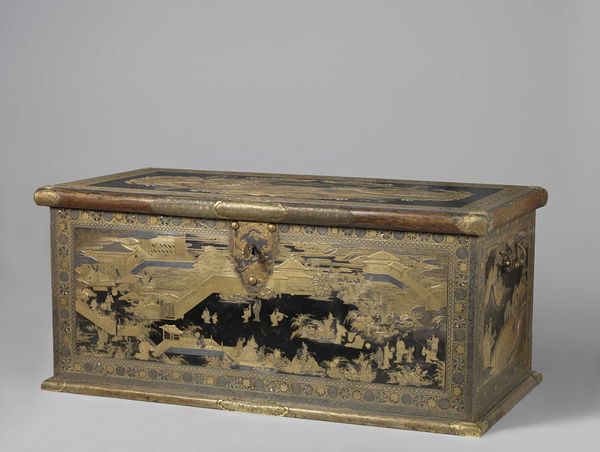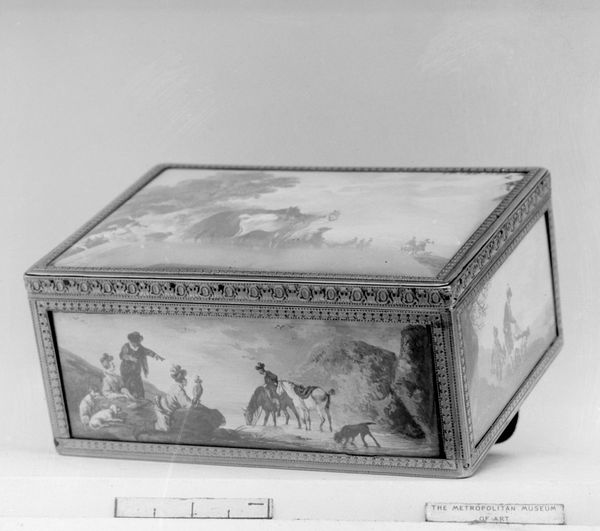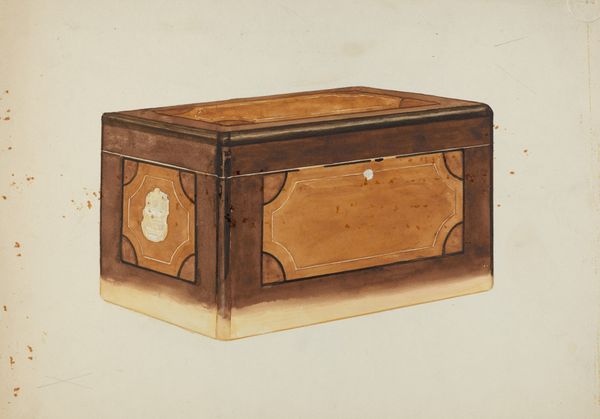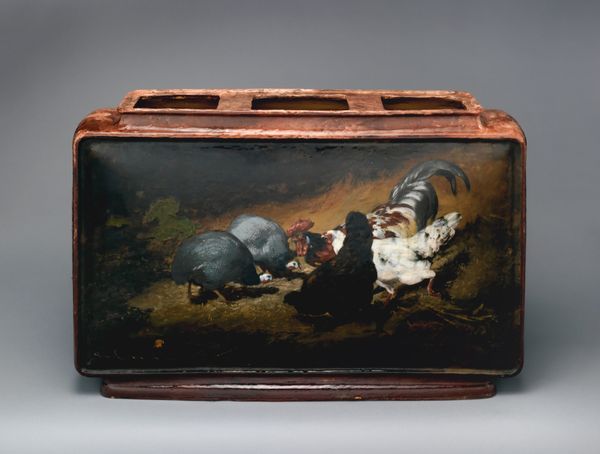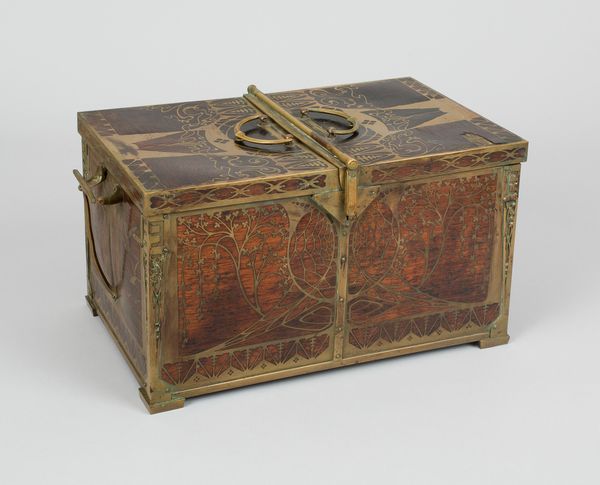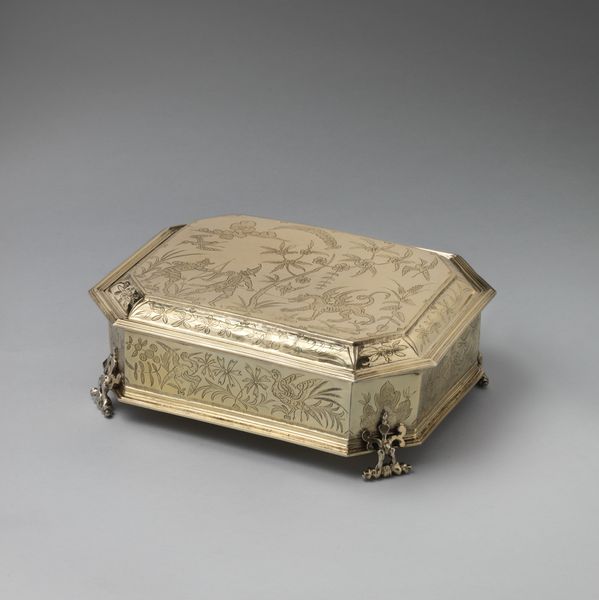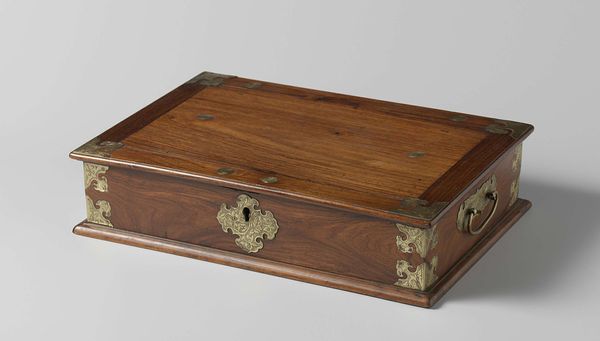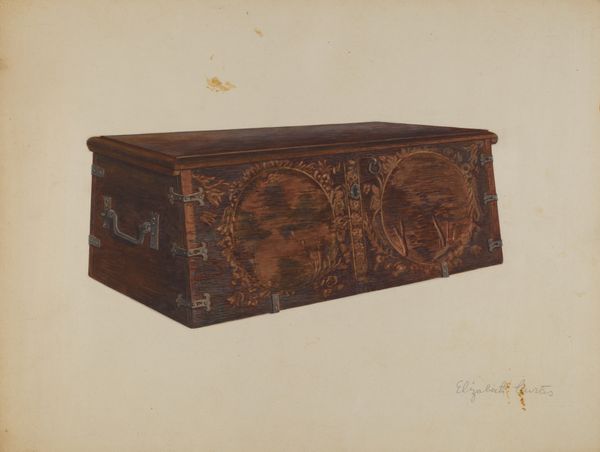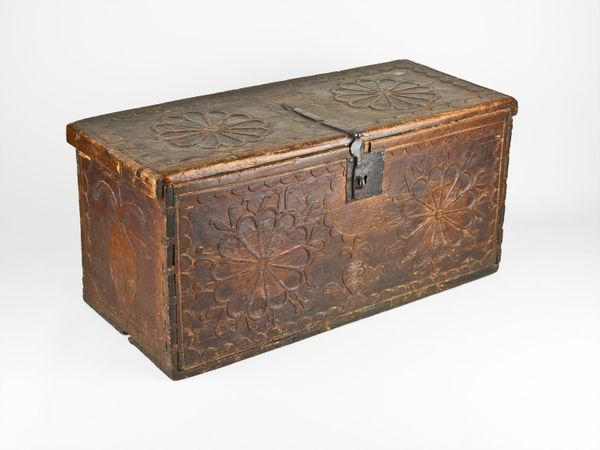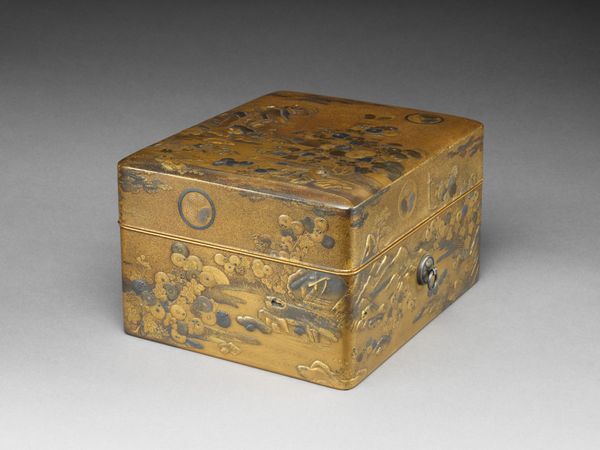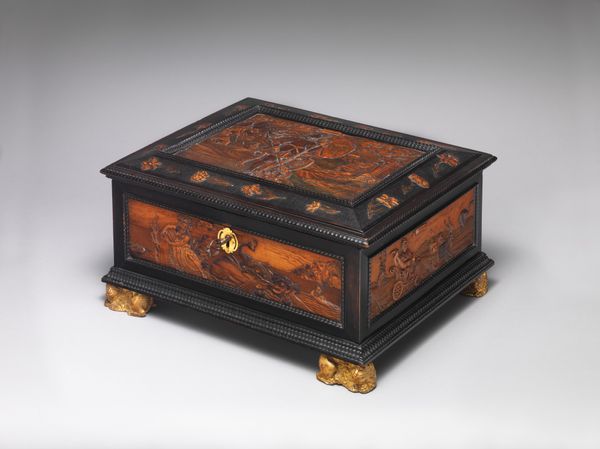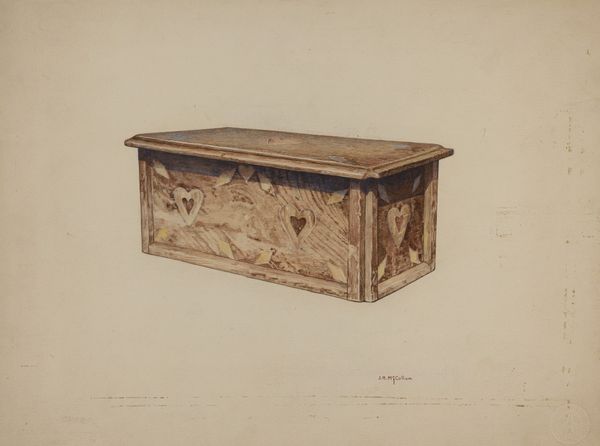
tempera, painting, wood
#
tempera
#
dutch-golden-age
#
painting
#
sculpture
#
landscape
#
wood
#
genre-painting
#
history-painting
#
miniature
Dimensions: height 21.5 cm, height 44.0 cm, width 36.0 cm, depth 23.7 cm
Copyright: Rijks Museum: Open Domain
Curator: Look at this “Decorated Painter's Box” made sometime between 1640 and 1660. It's rendered in tempera on wood. It’s fascinating how artists of the Dutch Golden Age blurred the lines between the practical and the decorative. Editor: The monochromatic palette immediately strikes me – mostly blacks, grays, and whites. The limited color range gives it a stark, almost somber feel. What are we seeing depicted here? Curator: It features miniature paintings on all sides: battle scenes, landscapes. What's significant is thinking about the context – these aren't just aesthetic choices. Wood, tempera – these were materials readily available to many, indicating a potentially broader audience engaging with art-making, even outside the traditionally elite circles. It challenges the notion of art existing in a vacuum. Editor: The battle scenes are intriguing – they bring dynamism and tension to an otherwise functional object. It’s a container, yes, but the narrative painted onto its surface really draws the eye. It’s an object elevated by its intricate detail. Curator: Exactly. The creation of this piece undoubtedly involved labor, both in the carpentry of the box and the application of tempera. Thinking about workshop practices of the time, about the division of labor and apprenticeship models is crucial to understanding the final form. Editor: But aren't we still appreciating this object for its inherent qualities: the lines, the values, the rendering of figures in motion? It exemplifies skillful design, the careful use of contrasting light, which ultimately brings depth to a small scale, functional box. The narrative comes second; visual expression takes center stage. Curator: Well, by focusing only on formal qualities we would miss this piece as a possible product made for an artist reflecting and being engaged with their society by the means of using easily found material. But thinking through production and circulation really enriches our appreciation of what would otherwise just be seen as an art object for elites. Editor: I can definitely see value in understanding its societal role. Looking at its form and function gives an added appreciation, especially if thinking about the art box as a blank canvas for the artist who created it. Curator: I agree. Appreciating both the process and the finished art gives depth of knowledge that elevates how we think about such pieces from the Dutch Golden Age.
Comments
No comments
Be the first to comment and join the conversation on the ultimate creative platform.
